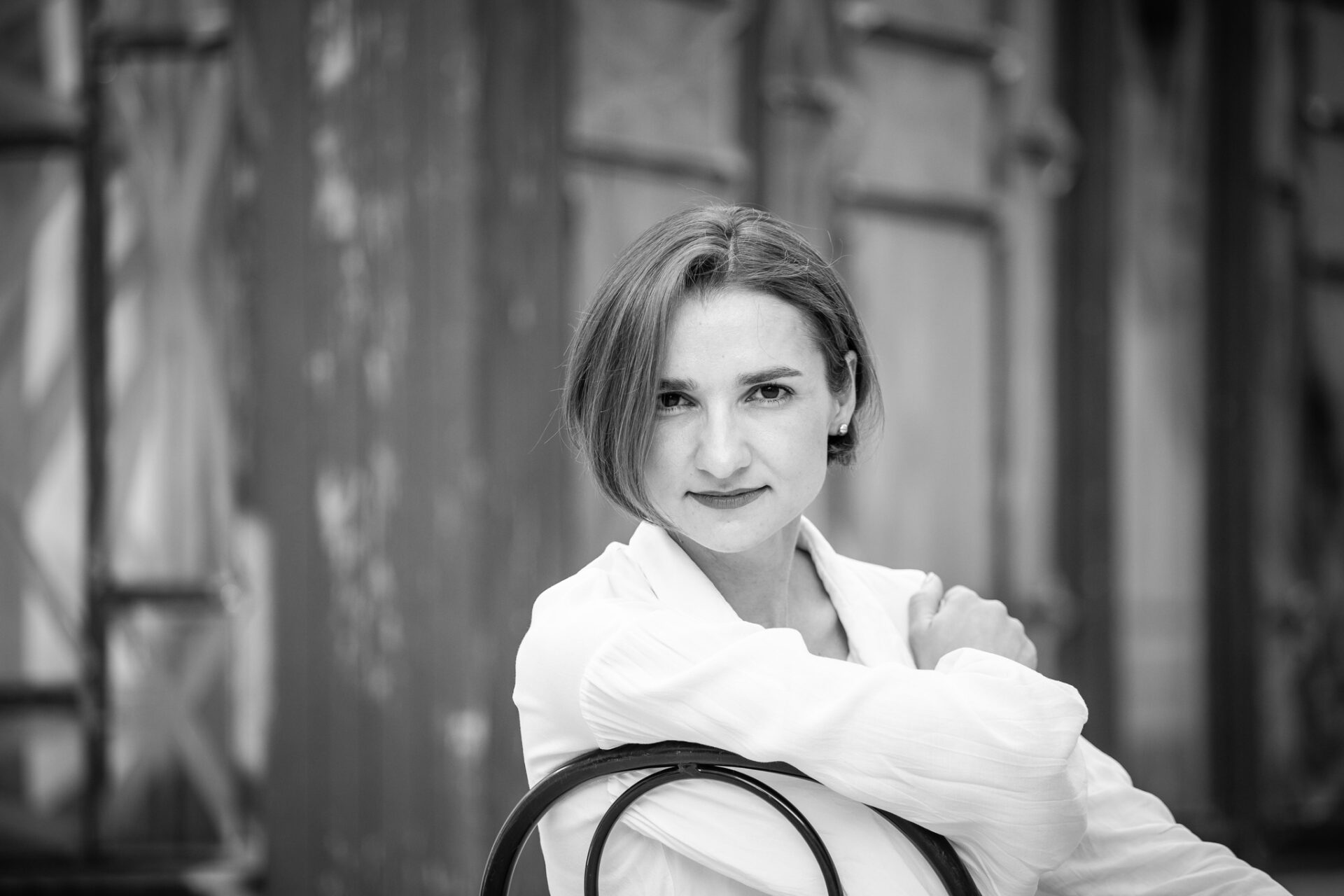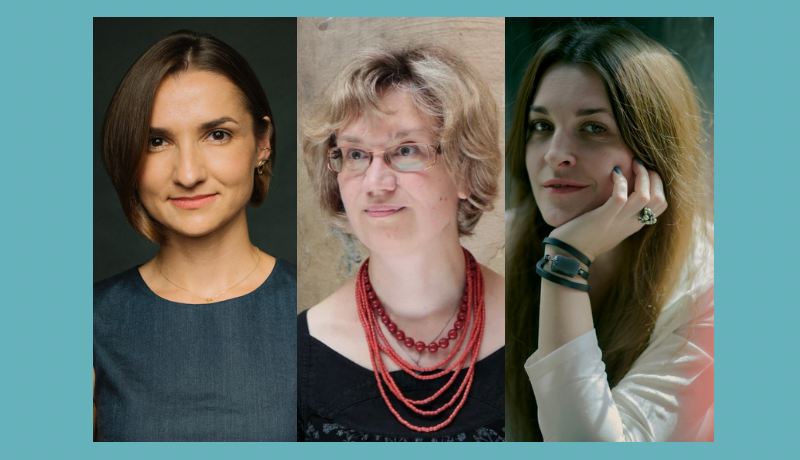* ESC - close the search window
PEN Ukraine
Sumy oblast of Khvyliovy, Bahriany and Tchaikovsky: Life on the borderline with the enemy
16.08.2024
In February, PEN Ukraine organized a literary and volunteer visits to the de-occupied territories of Ukraine. As its 9th trip, PEN Ukraine chose Sumy oblast, a region at the border with Russia in the north of Ukraine, which is now under the threat of re-occupation by the Russians. Writers and journalists visited Sumy, Trostianets, Okhtyrka and Hlukhiv. Chytomo is ready to share their impressions of what they saw in the liberated territories.
Hope and resistance in Sumy
During my short encounter with Sumy, I found the city cozy and bright. The brightness of this city could not be dimmed by the experience in February and March 2022, when Russians invaded the oblast and tried to capture the city. Perhaps it was due to the several centimeters of the fluffy and shiny snow that fell to the ground that weekend, but above all it was the open, brave, and sincere people of Sumy.
Built in 1702, the beautiful Holy Resurrection Church towers over the city. It has served as both a religious center and a defensive bastion since its foundation. After the February Russian offensive it became a gathering place for locals. According to the information given by our tour guide, there was no space to move in the cathedral due to the number of people, clothes, food, and medical supplies — everything that could have been useful in defense of the city. The Russians did not manage to occupy Sumy, but the city was under siege, and Russian vehicles moved through the streets.

Caution: People inside
Fluffy snow hides the crater from an explosion on Romenska Street Russians attacked from air and dropped several air bombs on the night of March 7-8 killing 24 people, including three children. The horrific words on the fence opposite read in Russian “Caution: People inside,” while other houses silently display boarded-up windows and the remains of the foundation of a house that was destroyed to the ground are visible from the snow.
The crater in the place of the Sumy Higher Artillery Command School looks terrifying. Taking pictures is prohibited here, but there is no way one could forget the image anyway. It is not easy to count all the scars and wounds on the city’s body caused by Russian air strikes, including the Sumy State University with broken windows in the library and the shelled neighborhoods.
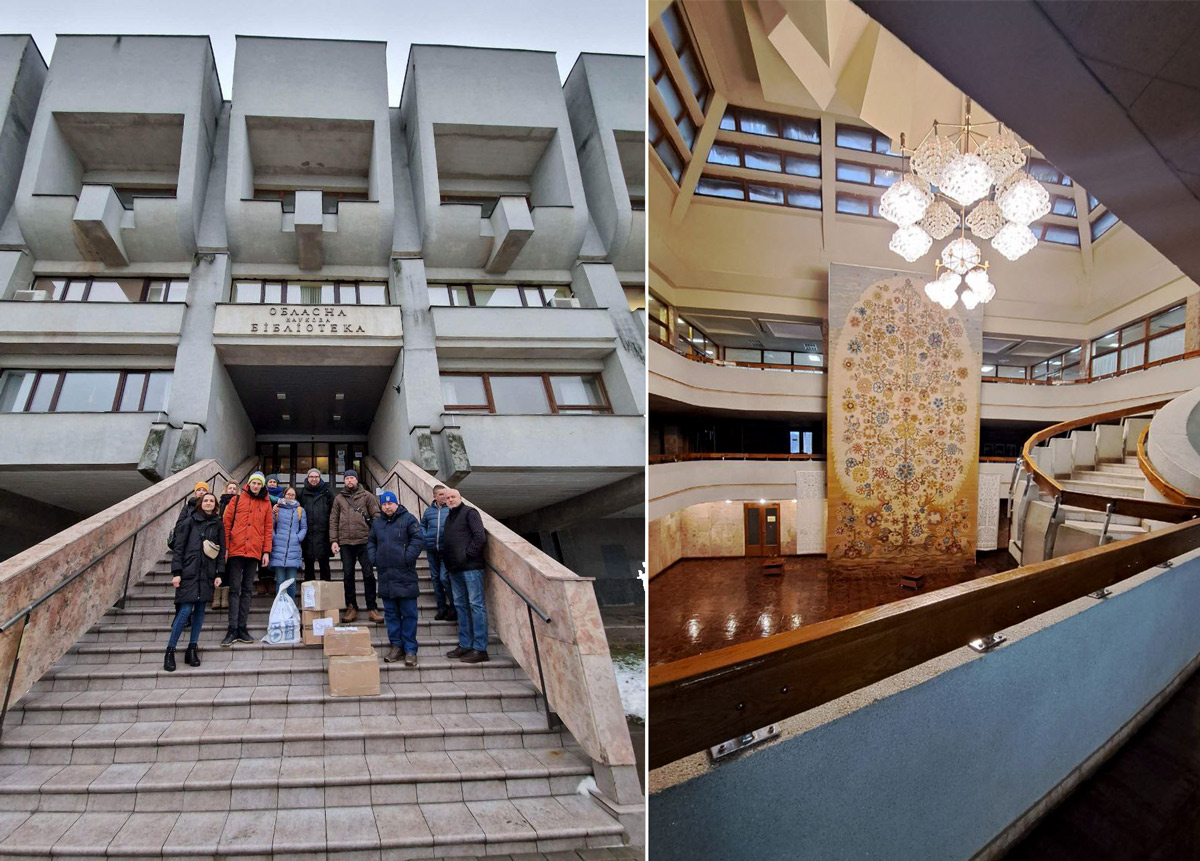
Anatolii, one of the organizers of the resistance and a soldier whose name and call sign cannot be mentioned because of expectations of a new Russian offensive. The tension is palpable as everyone in Sumy has seen the destruction that a renewed Russian offensive has brought. Anatolii lost both legs defending Ukraine in 2014, but on Feb. 24, 2022 he joined the ranks of the city’s resistance. He helped organize it, and keeps in touch with the regular military and volunteers.
“The leadership is changing. The governor has been replaced, for example, but this is at the level of top management. And at the level of company commanders, everyone is organizing, everyone is waiting for the enemy. This is also an impassable area for heavy equipment,” Anatoliy notes.
He says Sumy oblast will hold on, no matter what, and his confidence inspires hope.
It was heartwarming indeed to witness PEN Ukraine handing over a generator from Ukrainian writer Haska Kerosina Shyyan to the local military. All of PEN’s trips to the de-occupied or Russian-invaded territories of Ukraine are dedicated to both volunteering and literary activity. Every library they visit receives new books to its collection twice, brought during the visit and then collected additionally through PEN’s social media.

During their discussion at the Sumy Regional Library, locals share their experiences in February and March. They talk about farmers from neighboring villages who brought food and milk to the besieged city for free; about women who cooked dumplings and carried them to the territorial defense forces’ checkpoints every morning; about homeless who collected bottles for Molotov cocktails to be made. They also speak up about respect for each other, organized lines at pharmacies, and the absence of looting and panic.
There’s a woman who recollects the fear of the first days of the siege, and how she took out her sewing machines and started sewing yellow and blue chevrons for the military. Then the fear disappeared. Everyone talks about the flags that helped them keep their spirits up, which they checked every day and hoped were still there.
Between Russian and Ukrainian artists: Trostianets dichotomy
After Sumy we head to Trostianets. This is the only large city in the Sumy oblast that the Russians managed to occupy between Feb. 24 and March 26, 2022, and it was under the occupation for a month and 2 days.

City’s buildings suffered multiple destructions and damages, including a mansion dating back to the 18th century, which had hosted various art and music festivals and historical reenactments before the invasion, and had been used to hide Russian weapons and vehicles during the occupation. As a result, the building’s front elevation was damaged, and has visible cracks and holes.
Two days before the liberation of the city, the Russians targeted a hospital with about 20 people in it from a tank. Fortunately, everyone inside survived. The hospital has already been completely restored inside, but the damaged facade and the nearby polyclinic, not yet restored, remain a symbol of Russian war crimes.
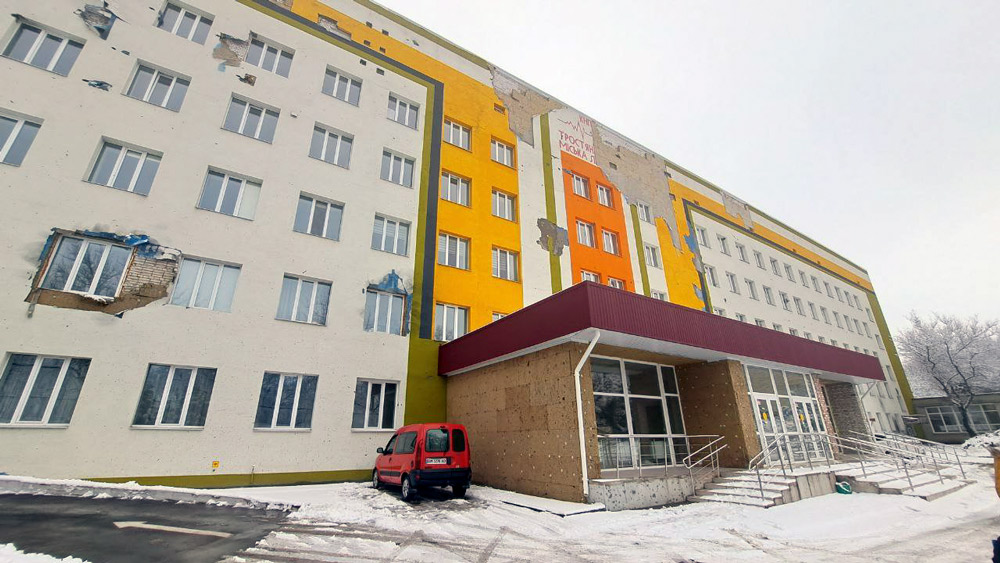
Before the full-scale invasion, the city was actively developing. The twin cities from Poland, Lithuania, the Czech Republic, and Montenegro played a significant role in this. The flags of these twin cities fly in the Tchaikovsky City Park.
The German sugar producer Leopold Koenig, whose factories gave impetus to the development of Trostianets in the 19th century and whose descendants continue to contribute to the town’s prosperity to this day, had a great impact on the city’s history.
The city’s image is based on Koenig, his mansion, the Trostianets chocolate factory, and, above all, the Russian composer Pyotr Tchaikovsky, who lived in Trostianets for several months when he was a student. However, Trostianets’s image lacks an extremely important component: the figure of Mykola Khvyliovyi, a prominent Ukrainian writer of the 20th century who was born here. The only memorials to this famous author are a plaque on the building of Trostianets Specialized School No. 1, where his family lived, and an exhibition in the local history museum, which also came under Russian fire.
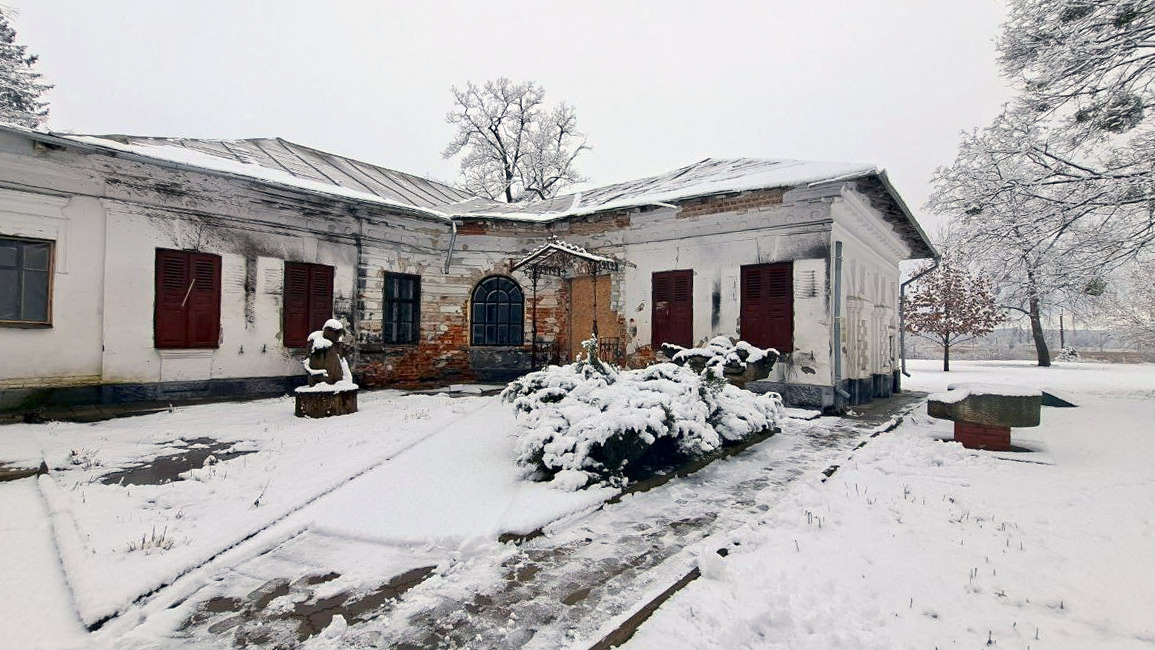
Okhtyrka: A place of Ivan Bahriany and resilient townspeople
Okhtyrka is a city in the Sumy oblast that is strongly associated with another prominent Ukrainian writer Ivan Bahriany. A person whose life was full of stunning adventures and unexpected rescues was born here.
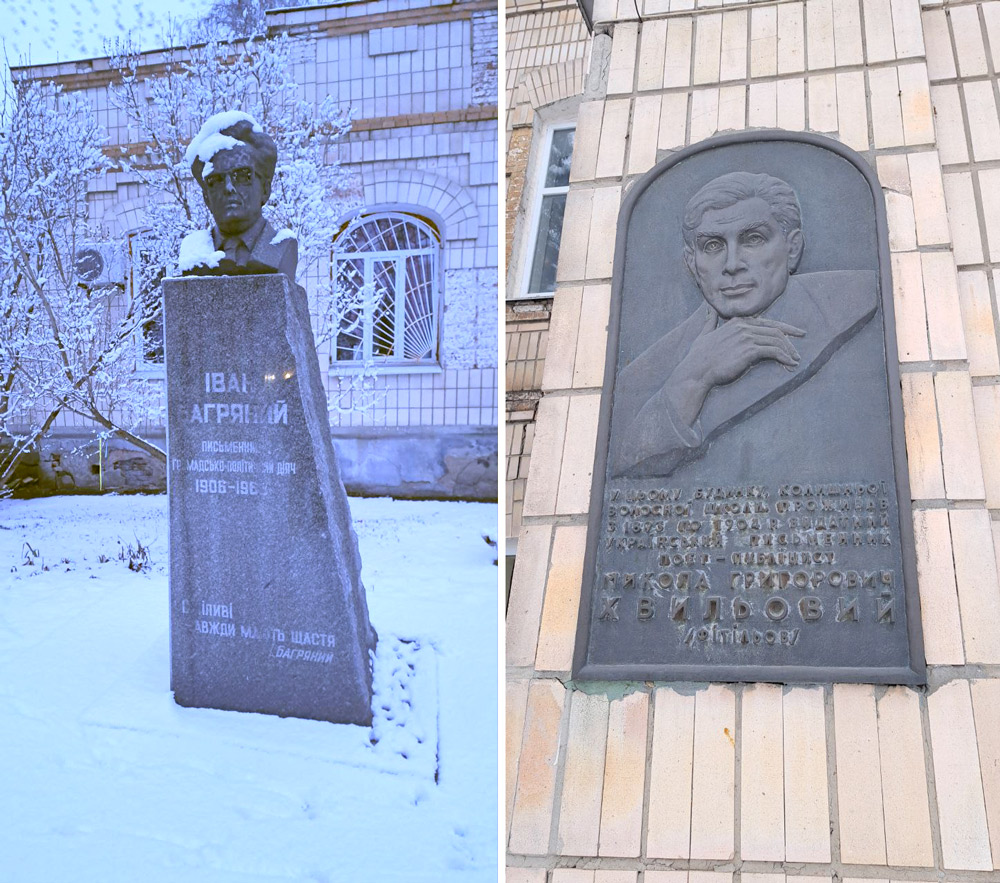
Here, at the corner of Hrabovsky Street and a bunch of old one-storeyed buildings that begin near the intersection of Pokrov Cathedral and Ivan Bahriany Lane, the house where the writer was born, a one-storeyed building dating back to 1928, has been preserved. Today, its history is told only by a memorial plaque and an old surviving wooden brown shutter. The house is now private property and new owners have lived there for several years.
RELATED: Ruins, cold, and stoicism: What US writers saw in the de-occupied territories
Eight years ago, the house was a ramshackle. Later, the house was bought by a local lawyer, Iryna, who later learned that Ivan Bahriany was born and lived in this house.
According to the owner of the house and the mayor, Pavlo Kuzmenko, the perception of Bagriany’s personality and works in Okhtyrka began to change only recently. Four years ago, Iryna started renovating the house to live there with her family. Before she started, she asked the then mayor if she was permitted to do so because Ivan Bahriany had lived in the house, and if Okhtyrka wanted to buy it back. The mayor refused.
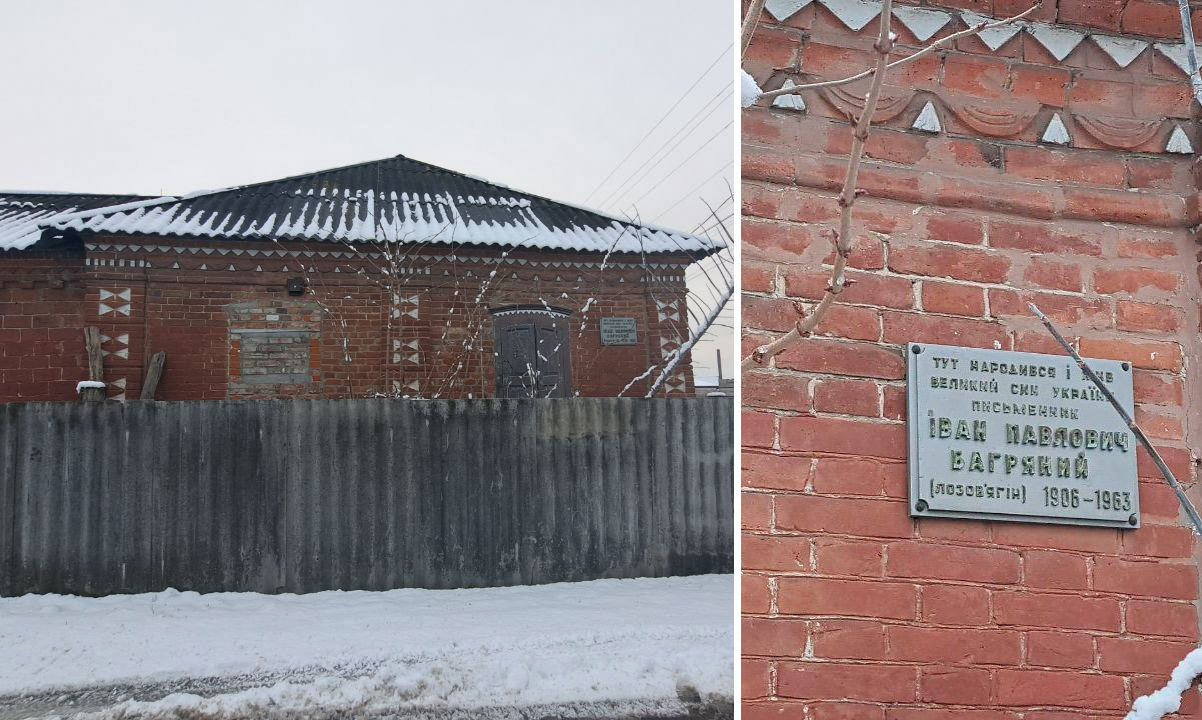
Iryna invited us into the house to show what was left of the Lozoviahs family — the stove. The owner of the house says that it warms the whole house and sings. It was built by Ivan Bahriany’s father, Pavlo Lozoviah.
We asked if the town authorities would like to purchase the house and create a museum in it, but the mayor replied that there are no funds for this at the moment. So the fate of the Ivan Bahriany museum at the place of his birth remains uncertain.
There is a museum in Okhtyrka, and some of the exhibits on display are dedicated to the famous countryman. This is the city’s local history museum, near which a Russian bomb fell in March.
The Russians failed to occupy the city, which was the site of the fiercest fighting in February-March 2022. That’s the reason they mercilessly destroyed residential buildings, military facilities, and the historic center of the city with air strikes. The local history museum has boarded-up windows with no glass, and the roof is badly damaged. Before the attack, there were almost 10,000 exhibits there. The exhibits have now been moved, and their location is a secret.
The city council building opposite the museum was completely destroyed and the library had to move to the museum. The Center for culture and leisure, where Ivan Bahriany worked as a decorator, was damaged.
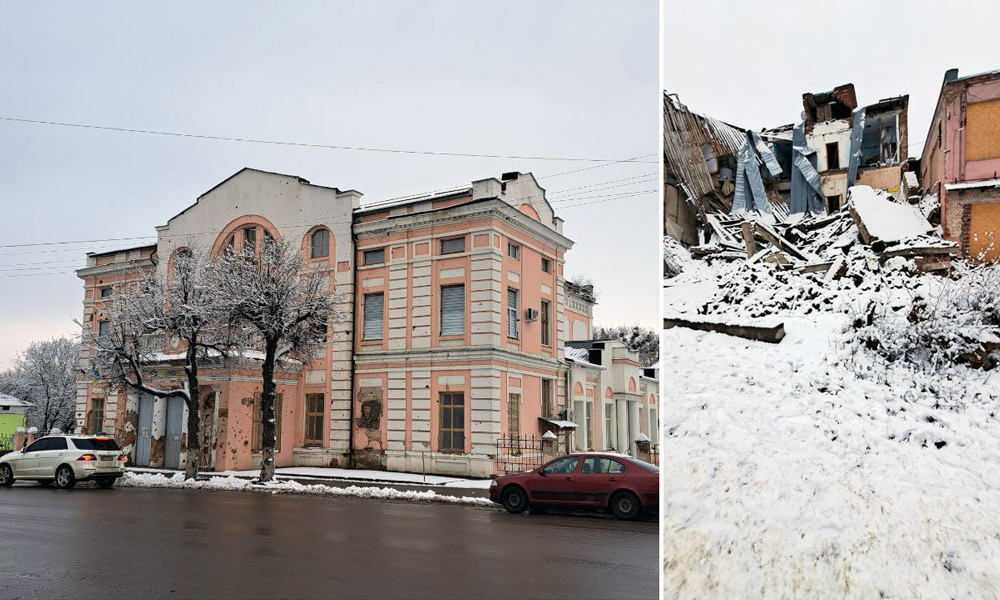
There are many residential buildings nearby with broken windows, and some of the private houses have been completely destroyed. All houses have been restored, except for one multi-storeyed building not yet rebuilt.
Later, we went to the local library to have one more meeting. A local woman told us about how she lost her brother and how during the siege she baked pies for the soldiers in her cafe. She baked until she ran out of filling, and then made buns until she ran out of flour. I will never forget the girl who, through tears, told us about how she had to evacuate to Lithuania and then could not help but return because she “never thought it was possible to love Ukraine so much. This is my home.”
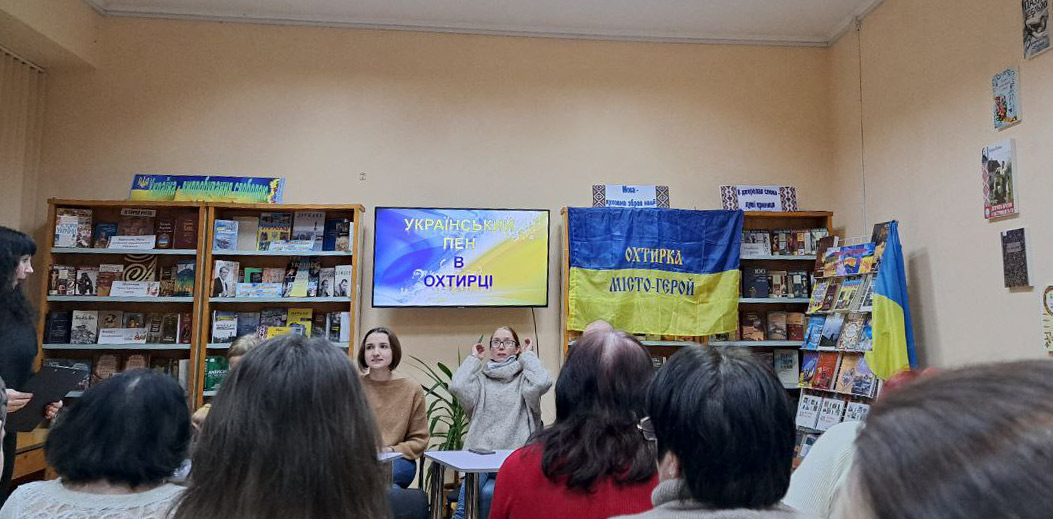
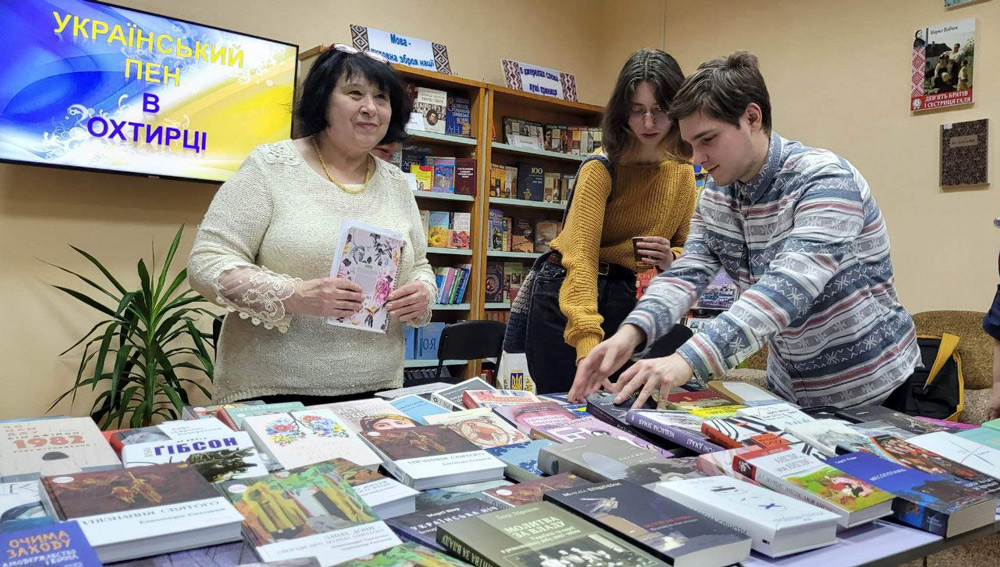
Cossack Hlukhiv besieged
The last place on our route was Hlukhiv. This is an ancient Cossack town (it was the residence of Hetmans Ivan Skoropadskyi, Danylo Apostol, Kyrylo Razumovsky, who ruled the Ukrainian state in the 18th century). It is located to the north of the region, less than 15 kilometers from the border with the enemy. Although Russian vehicles did not enter Hlukhiv, the city was isolated from February 24 until early April, because enemy military convoys constantly traveled along the nearby roads, shooting at civilian cars that came across. The Russians did not enter the city, driving around it instead. Otherwise Hlukhiv could have been occupied and the Kyiv Gate — the only structure of the Hlukhiv fortress that has survived to this day — could have been destroyed.
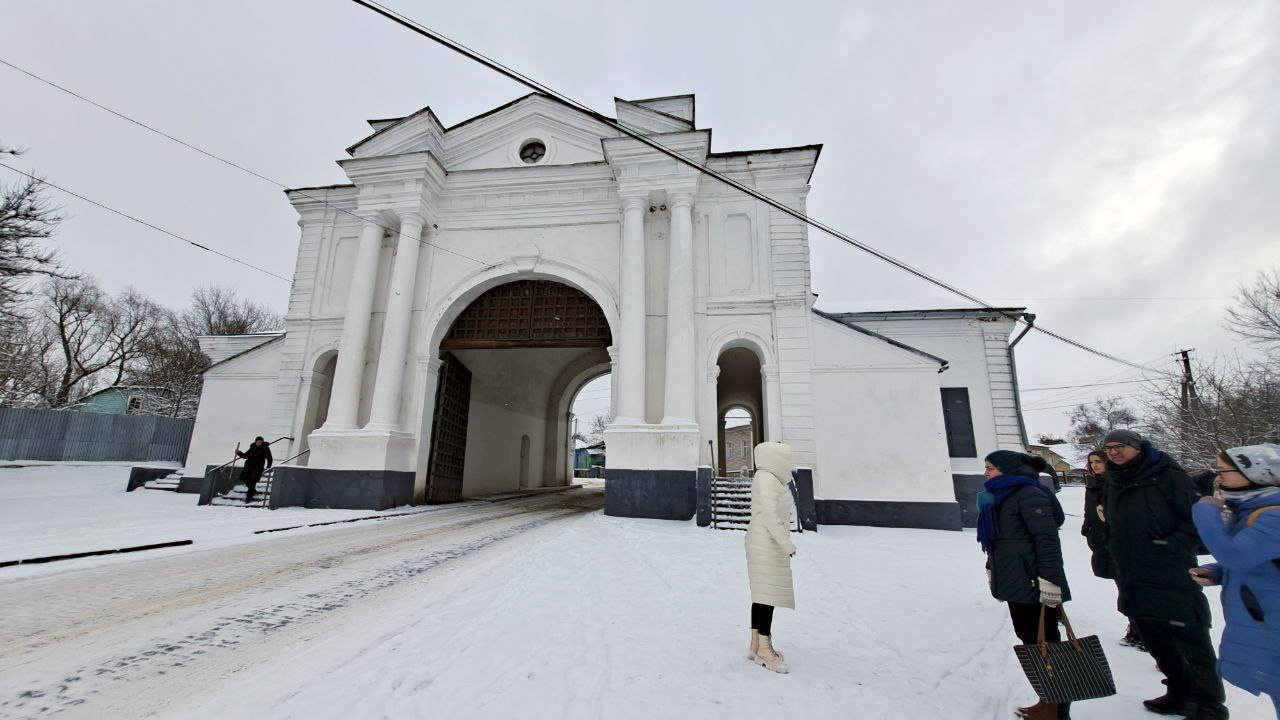
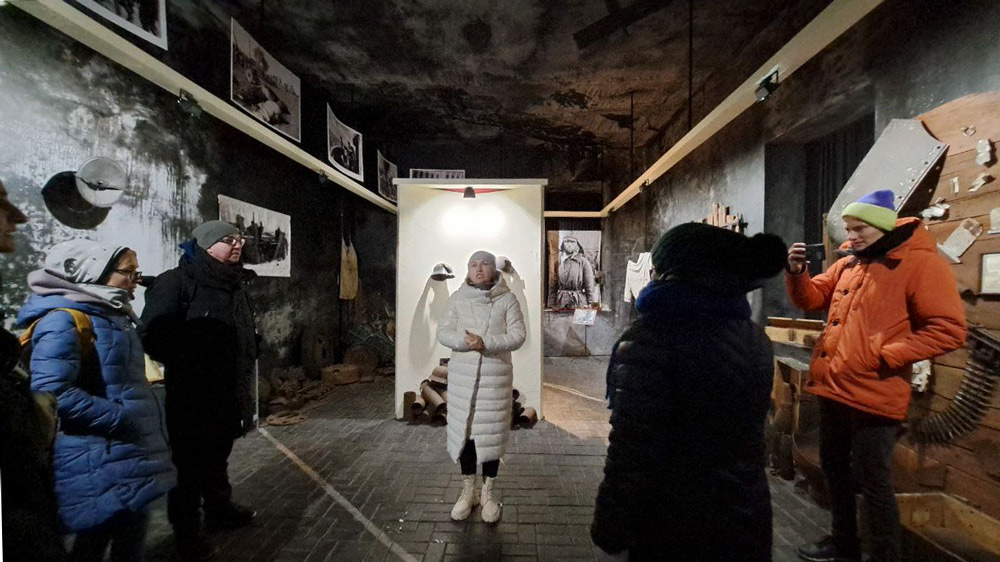
Fortunately, the gate is intact and is at its place. According to the tour guide, the story that the stone gate was built to replace the wooden one in honor of the visit of Russian Empress Catherine II to Hlukhiv is a myth.
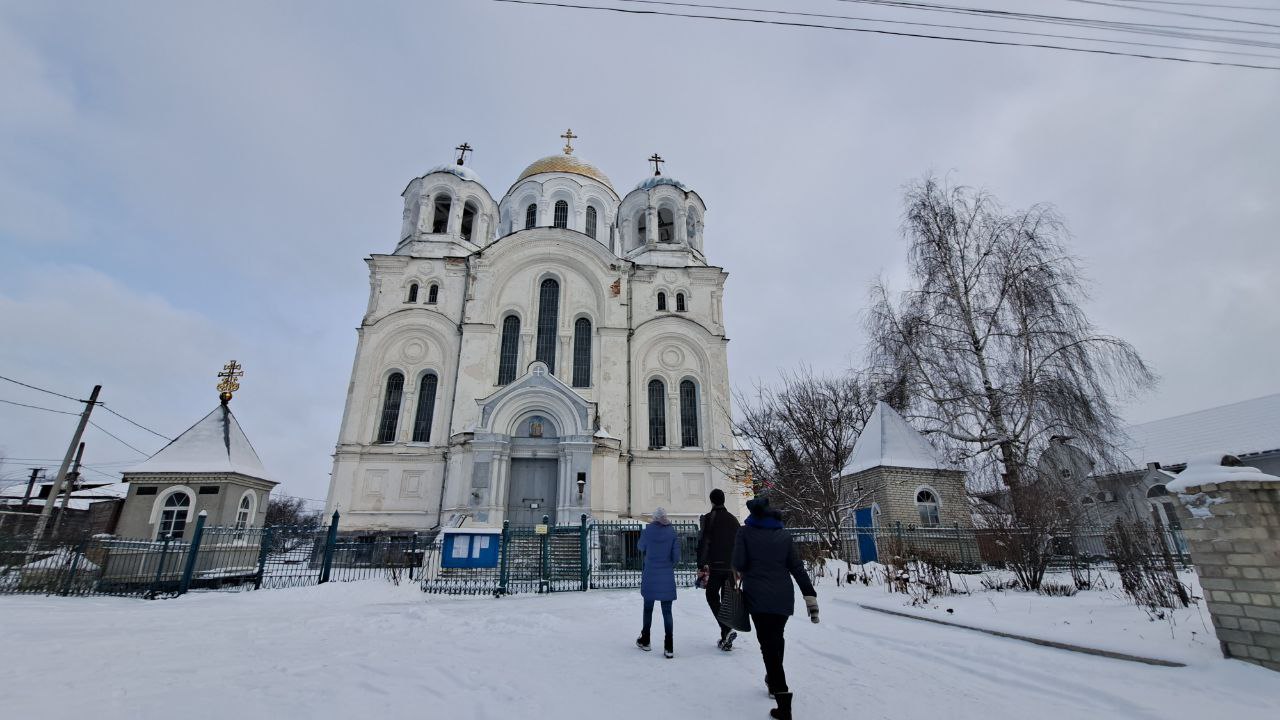
The park features sculptures of prominent Hlukhiv composers Maksym Berezovsky and Dmytro Bortniansky. Behind them is a water tower. For some reason, locals call it the main symbol of the city and it was used to shell enemy positions in March.
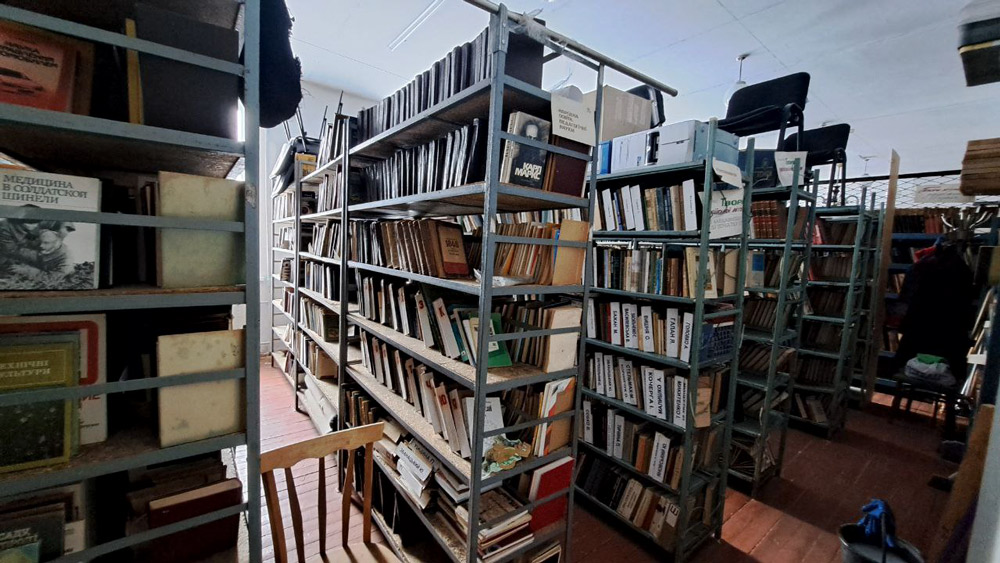
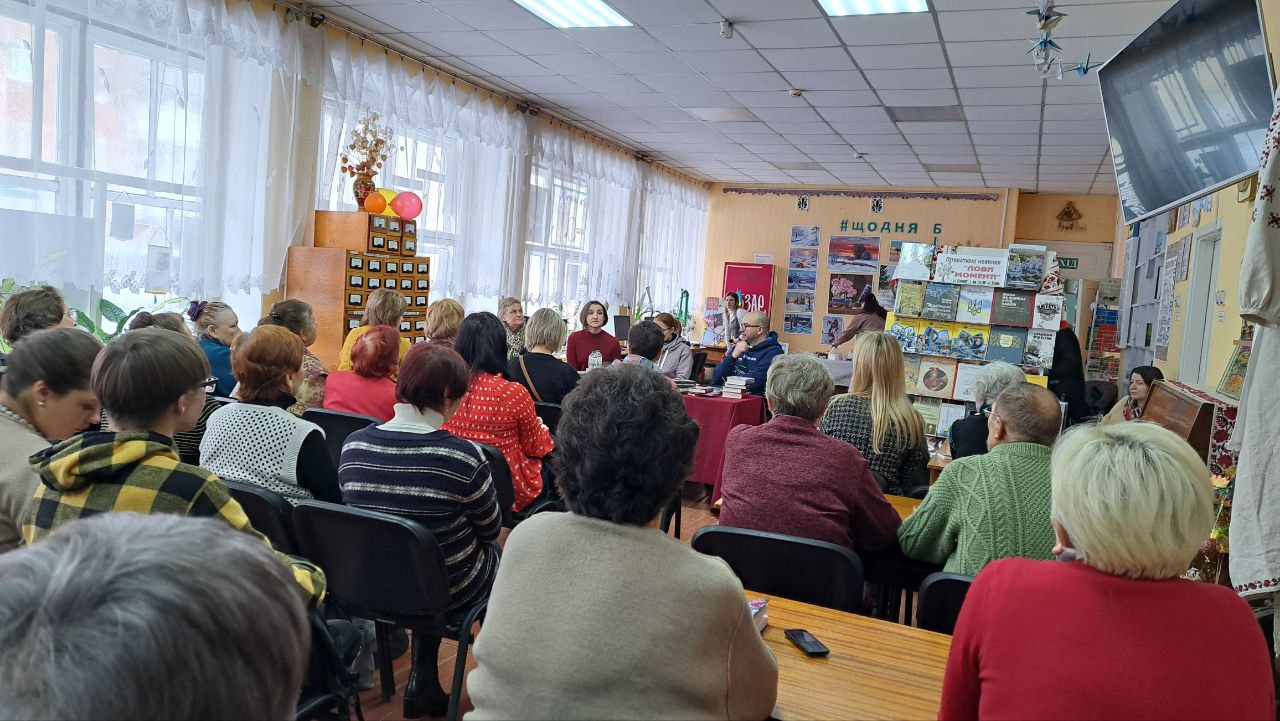
In the local library, Hlukhiv residents also tell their stories of the siege, recite their poetry with vigor, and then discuss for a long time the publications brought by PEN that will be added to the Hlukhiv library’s collection.
Translation: Iryna Saviuk
Copy editing: Benjamin Maracek
This publication is sponsored by the Chytomo’s Patreon community
the more you read, the greater the possibilities

